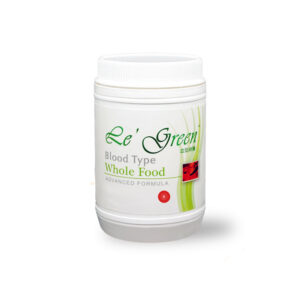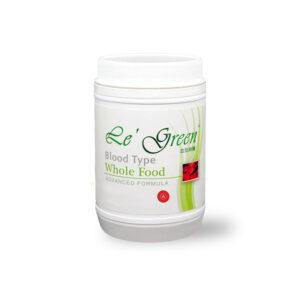Neurological Disorder
Several studies have reported that mesenchymal stromal/stem cells (MSCs) restore neurological damage through their secretion of paracrine factors or their differentiation to neuronal cells. Based on these studies, many clinical trials have been conducted using MSCs for neurological disorders, and their safety and efficacy have been reported. In this review, we provide a brief introduction to MSCs, especially umbilical cord derived-MSCs (UC-MSCs), in terms of characteristics, isolation, and cryopreservation, and discuss the recent progress in regenerative therapies using MSCs for various neurological disorders.
Introduction
Recently, mesenchymal stromal cells (MSCs) have been attracting much attention for their potential to treat neurological disorders.The concept of MSCs introduced by Caplan in 1991, can be traced to investigation of the inherent osteogenic potential associated with bone marrow (BM). MSCs have now been reported to be isolated from several sources, including BM, umbilical cord blood (UCB), adipose tissue (AD), and the umbilical cord (UC) . Among various sources of MSCs, we focused on the UC because of their abundance and ease of collection, non-invasive process of collection, little ethical controversy, low immunogenicity with significant immunosuppressive ability, and migration ability towards injured sites.Several studies using neurological disorder models have reported improvements after MSCs administration, and clinical studies using MSCs to treat brain injuries have been already conducted.In this review, we characterize UC-MSCs, in terms of characteristics, isolation, and cryopreservation, and discuss the recent progress of regenerative therapies using MSCs in various neurological disorders.
Methods to isolate UC-MSCs
Improved explant method
Collected UCs are manually minced into approximately 1–2 mm3 fragments. These fragments are aligned and seeded regularly on a tissue culture dish. After the tissue fragments attach to the bottom of the dish, culture media is added, slowly and gently to prevent detachment of the fragments [16], [17], [18]. When the fibroblast-like adherent cells growing from the tissues reach 80%–90% confluence in 2–3 weeks, the cells and tissue fragments are detached using trypsin. The culture is then filtered to remove the tissue fragments.
When using the explant method, it is critical that the UC tissue fragments tightly adhere to the dish to obtain MSCs consistently and efficiently. This is because MSCs can only migrate from the adherent UC tissue fragments and not from floating fragments. In fact, we demonstrated that only the adherent part of the cells in UC tissues showed positive CD105 expression. To prevent the floating of tissue fragments from the bottom of the culture dish, we improved the explant method by using a stainless-steel mesh (Cellamigo®; Tsubakimoto Chain Co.). In addition, the incubation time required to reach 80–90% confluence is reduced upon inclusion of the mesh.
Enzymatic Digestion Method
UCs are minced into small pieces and immersed in media containing enzymes such as collagenase, or a combination of collagenase and hyaluronidase with or without trypsin. Tissues are then incubated with shaking for 2–4 h, washed with media, and then seeded on a tissue culture dish. MSCs are then obtained as described above.
Cryopreservation
Long-term cryopreservation of UCs and UC-MSCs is desirable, because the same donor sample may be required multiple times in the future, and because the cells may be further investigated in the future with techniques yet to be devised. Long-term cryopreservation extends the usability of UC-MSCs. The main technique used to prevent damage is a well-studied combination of slow freezing at a controlled rate, and addition of cryoprotectants.
Characteristics of MSCs
MSCs and characteristics of MSCs are defined by criteria that form the basis for their use as therapeutic agents
Criteria for MSCs; biomarkers and differentiation potentials
The International Society for Cellular Therapy proposed minimal criteria for defining human MSCs. Firstly, MSCs must be plastic-adherent when maintained in standard culture conditions. Secondly, MSC must express CD105, CD73, and CD90, but not CD45, CD34, CD14 or CD11b, CD79α or CD19 and HLA-DR surface molecules. Thirdly, MSCs must differentiate into adipocytes, chondroblasts, and osteoblasts in vitro. UC-MSCs as well as MSCs derived from other sources meet these criteria.
Immunosuppressive properties
Immunosuppressive and immunomodulatory effects have now become the most popular property of MSCs for their clinical use. Defect of HLA-class II expression in UC-MSCs can theoretically rescue them from immune recognition by CD4+ T cells. Moreover, MSCs don’t express co-stimulatory surface antigens, CD40, CD80, and CD86, which activate T-cells. Thus, MSCs can escape activated T cells and exert immunomodulation. The immunomodulation may be resulted from soluble factors such as indoleamine 2,3-dioxygenase (IDO), PGE2, galectin-1, and HLA-G5. On the other hand, several studies have reported that UC-MSCs may display immunosuppressive properties only after exposure to inflammatory cytokines and/or activated T-cells, a process called licensing or priming. With these anti-inflammatory actions, MSCs could be good therapeutic candidates for neurological disorders accompanying inflammation.
Migration ability
MSCs are reported to exert migratory action similar to those of leukocytes with respect to cytokine responsiveness and the ability for transendothelial migration, and this migration capacity towards injured sites is one of the important factors in MSCs-based transplant therapy. In addition, Teo GS et al. reported that, BM-MSCs preferentially adhere to and migrate across tumor necrosis factor-α-activated endothelium in a vascular cell adhesion molecule-1 (VCAM-1) and G-protein-coupled receptor signaling-dependent manner and transmigrate into inflammatory lesion like leukocytes. We actually reported the migration ability of UC-MSCs towards injured neural cells with glucose depletion in vitro. Considering the treatment of neurological diseases, the passage of the MSCs through the blood–brain barrier (BBB) is a critical issue. Lin MN et al. reported phosphatidylinositol 3-kinase (PI3K)/Akt and Rho/ROCK (Rho kinase) pathways are involved in MSCs migration through human brain microvascular endothelial cell monolayers. In addition, Matsushita T et al. revealed MSCs transmigrate across the brain microvascular endothelial cells (BMECs) monolayers through transiently formed intercellular gaps between the BMECs. The migration ability of MSCs and the elucidation of mechanisms broaden the possibility of cellular therapy of neurological diseases.
Tissue repair properties
Neurorestorative and neuroprotective effects as a tissue repair property of MSCs can be mainly characterized by two mechanisms of action: neurogenic differentiation and cell replacement, and secretion of neurotrophic factors. Regarding the former, it has been reported transplantation of UC-MSCs can significantly alleviate ischemic injury, and the rescue arises from differentiation of transplanted cells into neurons and astrocytes. On the other hand, concerning the latter point, it has been reported the paracrine effects of UC-MSCs on nerve regeneration, showing that UC-MSCs secret neurotrophic factors and that UC-MSCs-conditioned medium enhances Schwann cell viability and proliferation via increases in nerve growth factor (NGF) and brain-derived neurotrophic factor (BDNF) expression. We also found that UC-MSCs which secrete neurotrophic factors such as BDNF and hepatocyte growth factor (HGF), but not nerve growth factor (NGF), attenuate brain injury. BDNF has been reported to improve hypomyelination via Erk phosphorylation or TrkB signaling, and HGF has been reported to influence the development and growth of oligodendrocytes, as well as the proliferation of myelin-forming Schwann cells, and also reduces gliosis by suppressing MCP-1 induction. These BDNF and HGF are reported to activate the phosphatidylinositol 3-kinase/Akt and MAP-kinase pathways which lead to neurorestorative, anti-apoptotic and neurogenic effects. In addition to the anti-inflammatory effect mentioned above, these neurogenic differentiation ability and the paracrine effects of UC-MSCs are expected to contribute toward their use as therapeutics for neurological injuries.
Our Products




